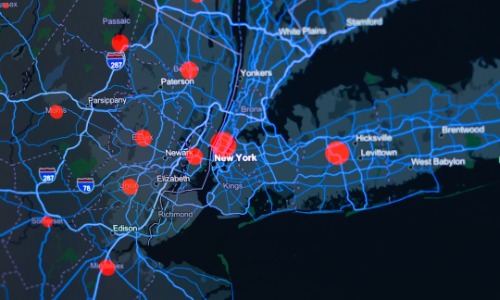Optimizing route operations with dynamic geofencing involves using real-time location data and geofencing technology to enhance the efficiency of route planning, vehicle tracking, and overall fleet management. Dynamic geofencing takes traditional geofencing a step further by allowing boundaries to be dynamically adjusted based on changing conditions, such as traffic, weather, or delivery priorities. Here’s how this concept can be applied to route operations optimization:
- Real-Time Tracking and Monitoring: Equip vehicles with GPS or other location-based technologies to track their positions in real time. This data helps you understand where each vehicle is at any given moment, enabling better coordination and decision-making.
- Dynamic Geofence Creation: Instead of relying solely on predefined static geofences, use dynamic geofencing to create virtual boundaries that adjust based on real-time conditions. For example, you could dynamically alter geofences to account for traffic congestion, road closures, or changes in delivery priorities.
- Route Optimization: Combine real-time vehicle locations, dynamic geofences, and traffic data to optimize routes in real time. By rerouting vehicles to avoid traffic congestion or unexpected obstacles, you can minimize delivery times and fuel consumption.
- Alerts and Notifications: Set up alerts and notifications triggered by dynamic geofences. For instance, if a delivery vehicle approaches an area with high traffic, the system could automatically notify the driver and dispatcher, allowing them to make adjustments to the route or delivery schedule.
- Resource Allocation: Use dynamic geofencing to allocate resources efficiently. If a new order comes in that’s geographically close to an existing route, the system can dynamically adjust the geofences to include the new destination without disrupting the current route.
- Adaptive Scheduling: Incorporate dynamic geofencing data into scheduling algorithms. As vehicles enter or exit dynamically adjusted geofences, the system can adapt delivery or service schedules to account for changing conditions.
- Customer Experience: Dynamic geofencing can also benefit customer experience. Send automated notifications to customers when a delivery vehicle is approaching, providing them with accurate ETA information and enhancing transparency.
- Data Analysis and Improvement: Collect and analyze data from dynamic geofencing interactions to identify patterns, bottlenecks, and areas for improvement in your route operations. This data-driven approach can lead to better decision-making and continuous optimization.
- Integration with Other Systems: Integrate your dynamic geofencing system with other relevant technologies, such as traffic management systems, weather forecasts, and inventory management systems. This integration ensures that your route operations are informed by comprehensive and up-to-date data.
Overall, dynamic geofencing provides a flexible and adaptive approach to optimizing route operations. By leveraging real-time data and adjusting geofences based on changing conditions, you can enhance the efficiency, accuracy, and responsiveness of your fleet management and logistics processes.
